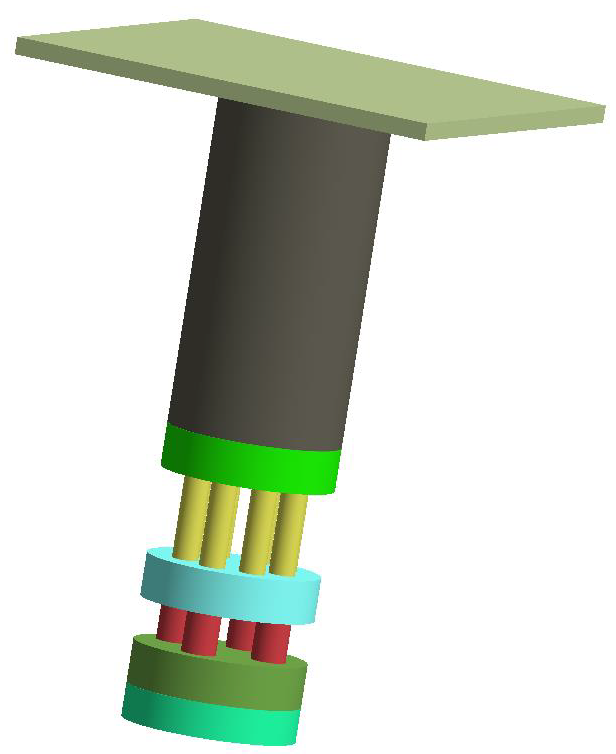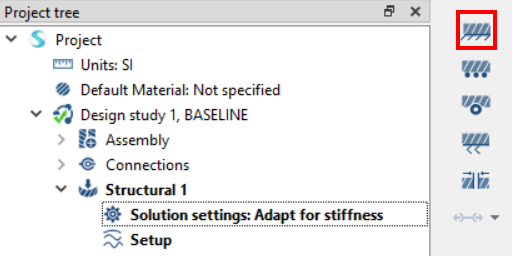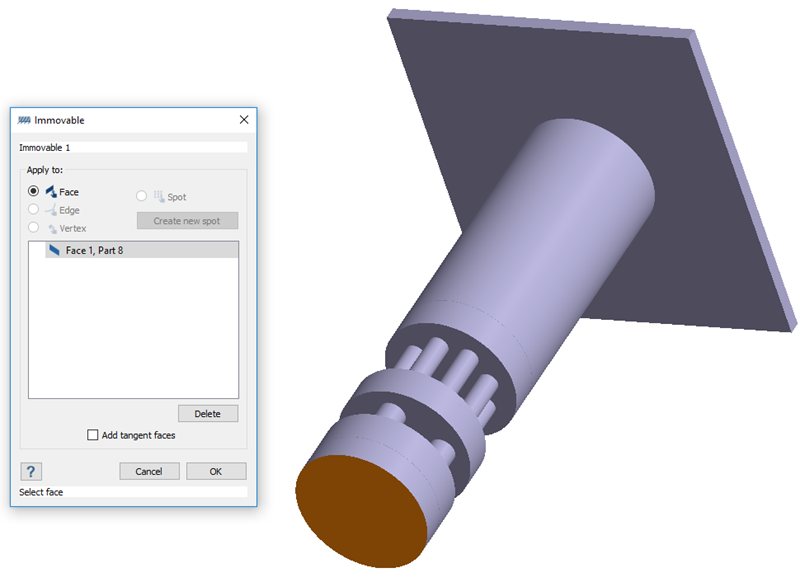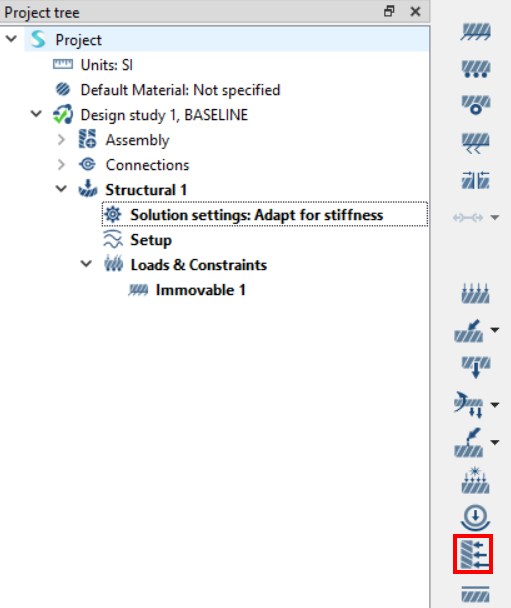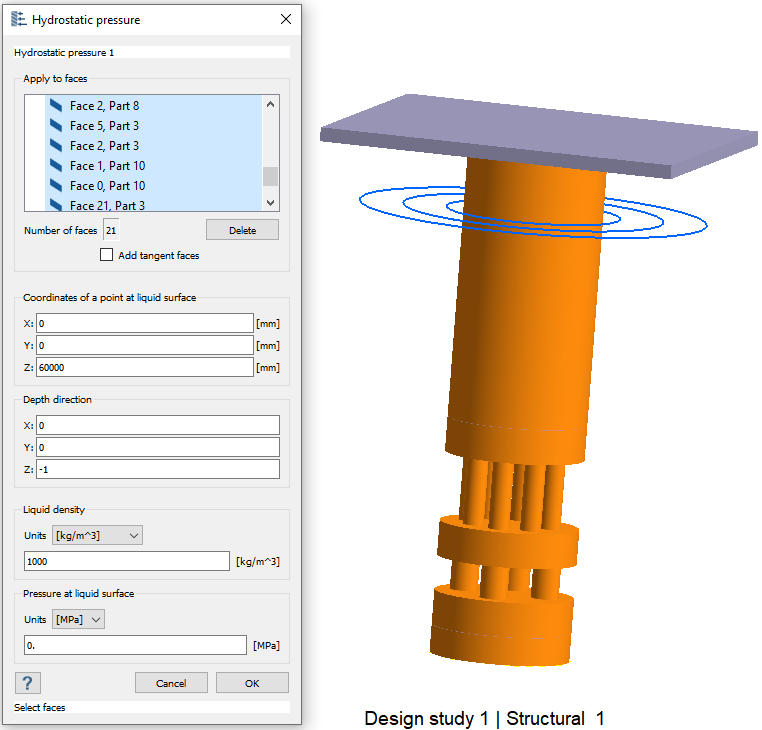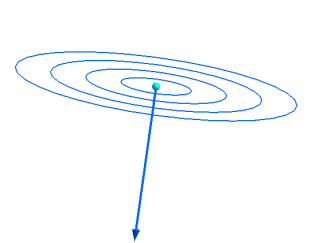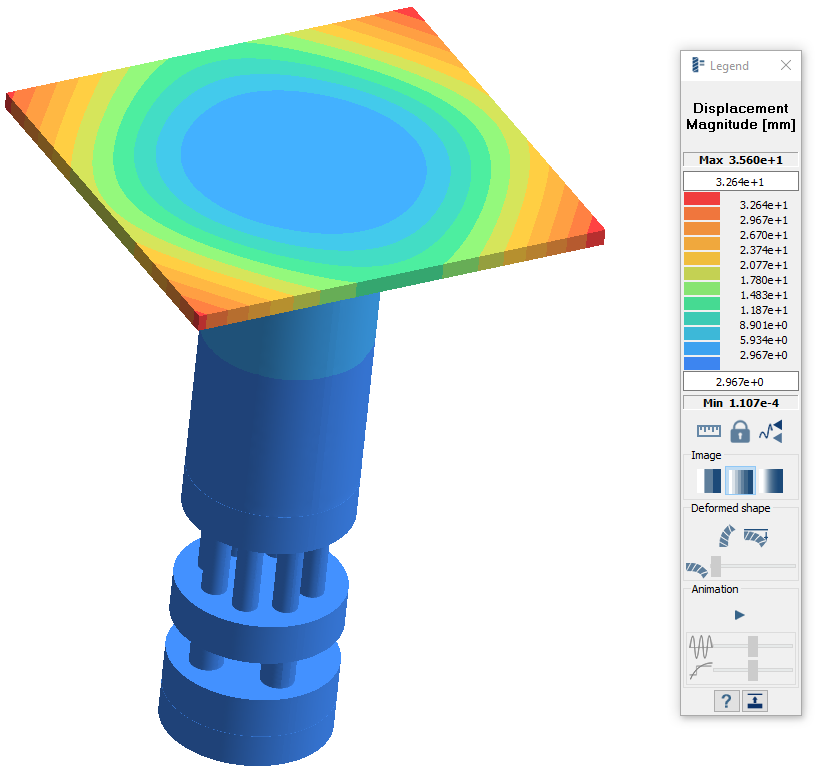SS-T: 3040 Hydrostatic Pressure
Create hydrostatic pressure in SimSolid.
- Purpose
- SimSolid performs meshless structural
analysis that works on full featured parts and assemblies, is tolerant of
geometric imperfections, and runs in seconds to minutes. In this tutorial,
you will do the following:
- Learn how to create a hydrostatic pressure load.
- Model Description
- The following model file is needed for this tutorial:
- HydrostaticPressure.ssp
Open Project
- Start a new SimSolid session.
-
On the main window toolbar, click Open Project
 .
.
- In the Open project file dialog, choose HydrostaticPressure.ssp
- Click OK.
Create Structural Linear Analysis
Apply Constraints
Apply Gravity Load
- On the Project Tree, open the Analysis Workbench.
-
In the workbench toolbar, click the
 (Gravity load) icon.
(Gravity load) icon.
- In the dialog, for Load direction vector, enter: 0, 0, and -1 for X, Y, and Z respectively.
- For Amplification factor, enter 1.
- Click OK.
Apply Hydrostatic Pressure
Run Analysis
- On the Project Tree, open the Analysis Workbench.
-
Click
 (Solve).
(Solve).
